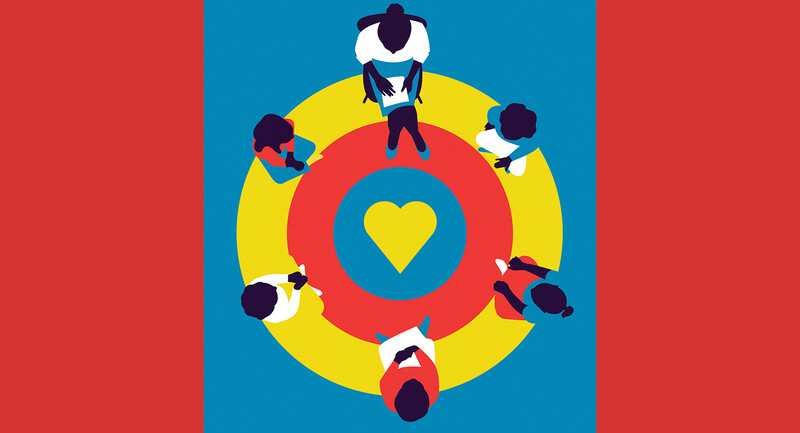By the end of our first grading conference, Marie Therese was beaming. We’d agreed on her grade for the first paper she’d written that year, and, while she had been nervous when we started, she was clearly satisfied at the conclusion of the meeting. In the conference, Marie Therese explained the revisions she’d made based on my feedback and showed me how her work met the rubric criteria, highlighting specific passages in her writing and matching them to the words describing the category ratings. In a few instances, she thought her work was in the developing category, and I explained that, in fact, the work met the proficient category. “I never thought of myself as a good writer. But I guess I’m better than I thought,” she said.
These powerful words proved true throughout the school year. Marie Therese met every writing challenge with a surge of innovation, complexity, and wit. She put words together in delightful ways, and her story ideas were original and thrilling. It was gratifying to watch Marie Therese grow in confidence and take risks that pushed her writing skills into new territory. Even Marie Therese’s classmates in this 8th grade class took notice; after she shared with the class one of her stories that included a particularly clever twist, they erupted in applause.
Teachers can use the principles of competency-based assessment and social-emotional learning to shape a positive mindset within students.
To what do I attribute Marie Therese’s utterly delightful progress? Talent? Good modeling? A rich imagination? My teaching? Nope. Instead, I think what made the difference for Marie Therese was her mindset. Simply put, as a result of that first meeting, Marie Therese developed a positive mindset about her capabilities. Her comment to me that she hadn’t considered herself a competent writer was the tip-off. In the past, for some reason, she hadn’t felt like she was capable of good writing, but after that first grading meeting, she did feel capable—and that was what made the difference.
This example and others have demonstrated to me that teachers can use the principles of competency-based assessment and social-emotional learning to shape a positive mindset within students about the year. As a result, we can positively impact student learning.
The Power of Starting Off with a Positive Mindset
Teachers know about growth mindset and how powerful it is. Carol Dweck’s work in this field has been transformative. Other researchers have since doubled down on and extended this work. Mindset is so powerful, Stanford psychologist Alia Crum asserts, it can impact how our bodies process food! This is why fostering a positive, growth-oriented mindset in our students is so important for learning: it impacts engagement, motivation, and follow through.
Meanwhile, I knew from experience that the first summative assessment of the year—a paper requiring the application of skills students had practiced—could have an outsized influence on students’ mindsets. For example, I’d observed that some of my students who initially earned grades in the developing or beginning range on the rubric wouldn’t rewrite their subsequent papers despite my urging. Instead, they told me, they just weren’t “good at English.” And, unfortunately, I also noticed that these students often disengaged from class, not taking an interest in the projects and not really trying to improve. When I reflected on this phenomenon, I realized a few key things:
- The first summative assessment is the first definitive information students get about their progress. If they get “positive” information (if their performance is in the mastery or proficient range), they tend to feel positively about themselves as learners. If they get what they consider “negative” information (their performance is in the developing or beginning range), they tend to feel negatively—not just about the work, but about their potential.
- The first summative assessment information can either reinforce or challenge a previously held mindset.
- Students’ mindsets can influence their performance all year long.
- Therefore, I needed to convince every single one of my students that they were capable of doing good work.
Realizing these things, I wondered how I could encourage a growth mindset, even for kids who didn’t see themselves as strong English students. And I wondered how I could use the first assessment to demonstrate to all students that they could progress. My solutions employed the tools of social-emotional learning as well as competency-based assessment.
Kindling Positive Emotions . . .
On the social-emotional front, I considered how to kindle positive emotions in my students because when we feel well, we perform better. Positive emotions come from experiences of connection, meaning, authenticity, and creativity. Accordingly, in the first day, week, and month of school, I introduced learning experiences that encouraged creativity of all kinds (not just writing) and that allowed students to build relationships with one another. For example, in response to works we read together, I asked students to make toys out of paper or to design an imaginary machine that could travel through time.
Projects like these helped all students access the content while fostering creative expression and connection. The class shared their inventions with one another and learned how to provide each other with encouraging feedback. In turn, I offered specific, positive feedback to every single student about what they’d made. I avoided comments like, “great job!” or “nicely done!” Instead, I’d mention something that was unique or thoughtful about the work. (“Priya, I appreciate that your time machine has a ‘don’t alter the timeline’ setting. That’s a big problem with time travel that you’ve neatly solved.”)
Doing these projects and exchanging feedback had an immediate impact. On the quick Google surveys I gave at the end of the trimester, the students reported feeling connected to the material and to each other and said they felt as though the work they were doing had meaning. They also noted they appreciated the creativity and collaboration they experienced in English class. My goal of sparking positive emotions was met.
. . . And Inspiring Improvement
Then, using the principles of competency or mastery learning, I changed my procedures around grading and assessment, with the goal of providing clearer, more targeted feedback, so that every student felt they could improve:
- I clarified the goals of the class for the students. I wrote and rewrote the learning targets, striving for clear, actionable language, and checked my work by having students edit it. After many iterations, we got to 10 learning targets for the year that the kids had edited and agreed upon. I also honed the exemplar models I used. While I had always shown examples of success, I added in examples of what not to do (which I wrote myself, so I wasn’t embarrassing any student) and examples of work that was proficient but not yet at mastery. Seeing the variety of exemplars was highly illuminating because the different levels of work clarified the learning targets as well as the category ratings. After these changes, the kids knew what they were working toward.
- I increased the frequency of formative assessment and feedback. I asked students to write both short and long works in class instead of at home. This not only meant they produced more writing, but also that I was around to offer immediate feedback. Additionally, I increased the length of time students had to practice by pushing the due date for the first summative assessment to the end of October (in a trimester system). To facilitate giving more frequent feedback, I often had students read their work aloud in class. I’d find the strengths in the writing and tell the student, out loud. Over time, students constructed a mental database of what worked in their writing, so when the summative assessment was due, they knew what to include. In my verbal and written comments, I only addressed elements of their performance related to the learning targets. For example, there’s no reason to bring up paragraph tabs if formatting isn’t one of the learning targets. Finally, I was conscientious about providing feedback that was more about strengths than deficits. So when I identified one major area needing improvement in a paper, I’d find two areas of strength to tout. Knowing one’s strengths builds confidence and a sense of competence.
- I built revision into assessment. I’d always allowed revision of summative assessments, but I built revision into the process in more intentional ways, such as dedicating class time to make requested edits. I’ve found that allowing students to redo work that hasn’t met the learning target is the best way to encourage a growth-oriented mindset. The inherent message to students is that success is not about performing a task correctly the first time; it’s about learning the skill competently so that it persists over time.
- I invited students into the act of evaluation and grading. First, I made sure my students knew the learning targets and what the language in the rubrics meant. Then, I asked them to assess each other’s work using the rubric (without attaching a grade). Finally, I had students evaluate and grade their own work with the rubric, using specific examples to explain their reasoning. Bringing students into the grading process was a transformational change, since it made a significant difference in how students viewed themselves as learners. When students graded themselves, they were much more aware of the changes they’d made through revision and how those edits improved the final product. As a result, they felt positively about their work. That “I’m just not good at this” feeling didn’t even have a chance to take hold.
Evidence of the Helpful Shift
After I’d made these shifts and after the first summative assessment, I had my students write a paragraph about their progress and potential in English. Overwhelmingly, the students reported good vibes. They were happy with how they were doing and felt they were going to get better and better as the year went on. This was the mindset that powered growth!
Every November, I would look forward to the day that I walked into the classroom–the first assessment in the bank–and saw a sea of bright, confident students.
In terms of student outcome data, every student made progress toward mastery of the learning targets. No one’s work was consistently stuck in the beginning or developing category of the rubrics because every student revised! As a result, grades were strong, and no one failed. Indeed, I can say with confidence that my students thrived.
In subsequent years in the classroom after I made these changes, every November, I would look forward to the day that I walked into the classroom–the first assessment in the bank–and saw a sea of bright, confident students who felt capable of taking on their next English project. While not every student I taught evolved into a Marie Therese, at least the majority of students weren’t mad about being in English class. And by using competency-based assessment and SEL principles to shape a positive mindset, I could create a warm, supportive space in which to learn.









